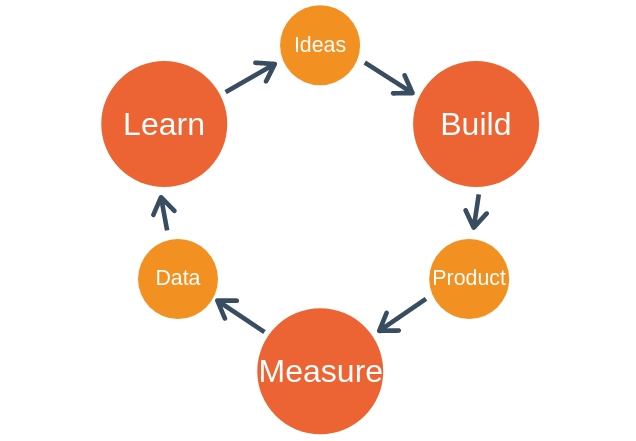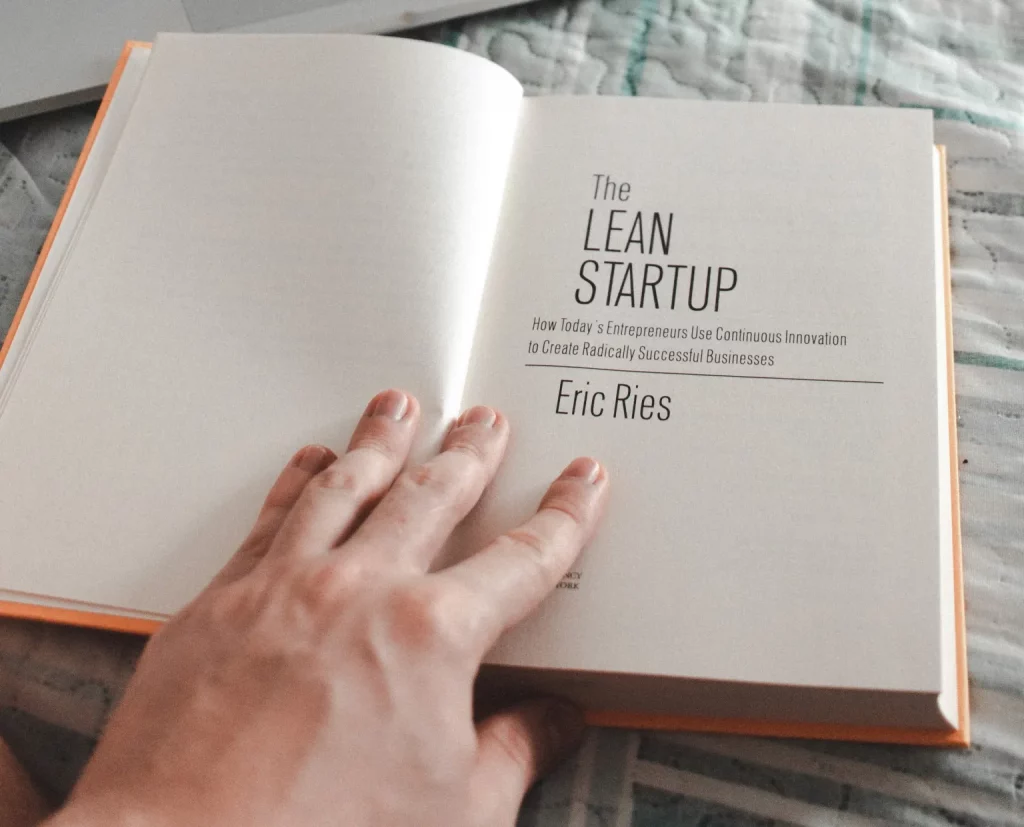The aim to shorten product development cycles and discover the proposed business model quickly is the theme of lean startup. It is a methodology of developing business and products with minimum time and effort for producing better results.
Lean manufacturing got popularized by the book ‘The Machine That Changed the World’ in 1990, based on the Pioneered production innovation by Taiichi Ohno called ‘Toyota Production System’.
An idea can be the stepping stone to great business enterprises. An average person has at least 20 interesting ideas that may be turned into commercialized and successful startups but, the ideas alone are not enough to produce the desired outcome, it is the execution.
Eric Ries encapsulates the five golden rules for setting up a successful business in his book called the Lean Startup, which are:
The Build-Measure-Learn Feedback Loop

Planning a lot and forecasting the future business of a startup is not practical. A startup may have the idea, but its lack of experience is a setback. A startup has to surf through uncharted territories and exploring new possibilities. The environment is new, and so is the expertise. The chances of error are high, and success rates are slim. Planning for several months and releasing the product only after thousands of hours for perfecting it, is a game of very high stakes. What if this product that you have built is a flop?
It is where the strategy of the Build-Measure-Learn loop comes into effect. You build a product from scratch, market it, sell it, see how the product performs in the market, take the feedback, learn from it, and then improve the product with needed changes, build again, and thus the loop continues. A startup’s goal should be to figure out the right thing to build as quickly as possible that the customers will be willing to pay.
Experimentation In Lean Startup
Observe, but don’t ask. A startup should observe every aspect of its products, negative and positive aspects of the products should be noted, and every possible effort should be made to remove the unnecessary and senseless elements in your product and double down on the one that makes sense. Startups should be able to build a Minimum Viable Product (MVP). An MVP is a finished product with zero-waste. Waste is something that doesn’t create value for the customers or one that doesn’t lead to validated learning. A product should only contain the features of utter importance, nothing more or nothing less viz. your MVP.
Types Of MVPs In Lean Startup
To get validated learning of the customers a series of MVPs can be introduced lean startup to understand the problems faced by the customers, and what they are willing to pay for.
- The video MVP: videos can be released in the media to understand the tastes of the customers. The amount of views and likes for the video gives an idea of the product appreciation and public needs.
- The Concierge MVP: This is a technique to make a product focused on a few customers and develop a product according to their needs. Once these customers are satisfied the product definition can be improved for expanding to more customers.
- The Wizard of OZ MVP: It is basically to pretend that a product has been developed that could give a fancy technical solution to the issues faced by the customers earlier. Valuable info is taken from the customer engagement and feedback is taken to find out that if the product is something that the customers needed.
Three Engines Of Growth In Lean Startup
- The Sticky Engine: It is designed to attract customers for a long term period. Repeat purchase companies use this kind of model.
- The Viral Engine: Just as the name suggests, these businesses focus on spreading at a viral rate. The idea is that, for every new customer joining, he should invite one or more friends to the fold. This model is adopted by all social networks and marketing businesses.
- The Paid Engine: Use of paid marketing strategies such as advertising to reach customers. And the difference between the Cost Per Acquisition (CPA) and Lifetime Value (LTA) gives the exact profitability of the customer over his lifetime.
All these help the lean startups concentrate on the right area to focus their energy on bringing up a viable product for the customer.
Pivot Or Persevere

It is about the decision to be taken for a better prospect of the company’s future. It is a fact that at some point in time the lean startup will hit a roadblock, and from there it will need to decide whether to remain on the course (Persevere) or to take a slight detour (Pivot). Pivot is a structured course correction designed to test a new fundamental hypothesis about the product or strategy. If your MVP shows no signs of improvement, the thought to persevere should never be considered, rather pivot to a better course of action.


 Schedule An Appointment
Schedule An Appointment